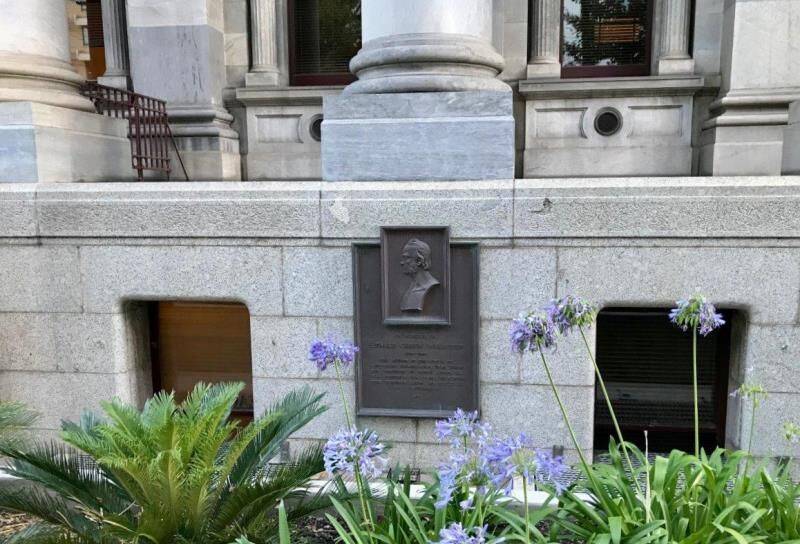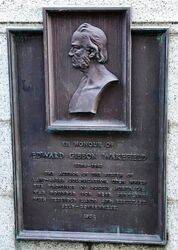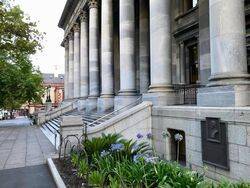
Edward Gibbon WakefieldPrint Page 
The plaque, featuring a bas relief portrait, commemorates Edward Gibbon Wakefield (1796 - 1862) who was the author of the system of land - sales colonization upon which South Australia was founded.
He was imprisoned in England, which led to his study of emigration and to his remedy, systematic colonization. Soon after his entry to Newgate, Wakefield occupied himself by inquiring why the prisoners were there, how effective were their punishments and what their prospects were. This and other material he brought before the public, chiefly in Facts Relating to the Punishment of Death in the Metropolis (1831), but also Swing Unmasked, or the Causes of Rural Incendiarism (1831), The Hangman and the Judge (1833) and Popular Politics (1837).
Wakefield` study of emigration aroused his interest in Australasia and his anonymous Sketch of a Proposal for Colonizing Australasia was printed in June 1829. Wakefield claimed that Australian colonies were suffering from chaotic granting of free land, shortage of labour and consequent dependence on convicts. He argued that if settlement were concentrated, waste lands of the crown could be readily sold and the proceeds applied to the emigration of labourers.
His articles influenced the issue of several new regulations for the disposal of waste land in New South Wales and Tasmania, and he began to plan the systematic colonization of southern Australia. Wakefield's role in the founding of South Australia is problematic. Sir Robert Torrens later credited him with the major role as did Governor Sir John Hindmarsh.
He was absent when the South Australian Association was formed late in 1833, but returned next year to help his brother Daniel to draft the bill to empower the British Crown to create South Australia into a British province or provinces and to provide for its colonization and government. Wakefield was active in organizing the lobbying that led to parliament passing the bill. After it received royal assent on 15 August 1834, he published The New British Province of South Australia (London, 1834; Edinburgh, 1835), a manual of advice and information for intending colonists.
When in London he found that Torrens had been made chairman of the South Australian Colonization Commission appointed by the government. Wakefield's interest in the new province was already on the wane, chiefly because he was disgusted by the low price of land fixed in his absence and the misleading 'self-supporting principle' adopted by Torrens.
In 1838 he became a director of the Western Australian Company which had plans for a settlement, “Australind”, at Port Leschenault in Western Australia, but this settlement was not a success.
Location
| Address: | North Terrace & King William Street, Parliament House, Adelaide, 5000 |
|---|---|
| State: | SA |
| Area: | AUS |
| GPS Coordinates: | Lat: -34.921323 Long: 138.599032 Note: GPS Coordinates are approximate. |
Details
| Monument Type: | Plaque |
|---|---|
| Monument Theme: | People |
| Sub-Theme: | Government - Colonial |
| Link: | http://adb.anu.edu.au/ |
Dedication
| Actual Monument Dedication Date: | Friday 18th April, 1952 |
|---|
In Honour Of
EDWARD GIBBON WAKEFIELD
1796 - 1862
The Author Of The System Of
Land - Sales Colonization Upon Which
The Province Of South Australia
Was Founded For Free Settlers
With Freehold Lands And Resultant
Self - Government.
1952






 Plaque Unveiling 1952
Plaque Unveiling 1952
